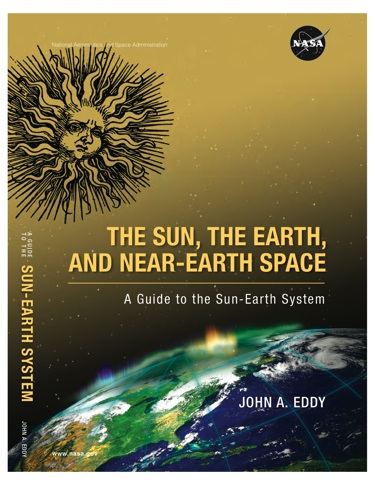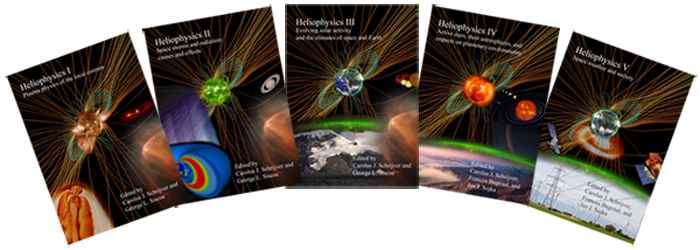LWS Science Home
(Targeted Research & Technology)

THE SUN, THE EARTH, AND NEAR-EARTH SPACE: A Guide to the Sun-Earth System.
Now available as a COMET MetEd training module
The goal of the Living With a Star (LWS) Program is to develop the scientific understanding needed for the United States to effectively address those aspects of the connected Sun-Earth system that may affect life and society. A highly readable account of the Sun-Earth system can be found in the LWS TR&T-sponsored free book by John A. Eddy (NASA Publication Number: NP-2009-1-066-GSFC). In addition, the LWS program has sponsored the development of a set of highly accessible Textbook Series on Heliophysics and Space Weather for its Summer School programs.
The LWS Targeted Research and Technology (TR&T) program element solicits proposals leading to a physics-based understanding of the integral system linking the Sun to the Earth both directly and via the heliosphere, magnetosphere, and ionosphere. The program’s objectives can be achieved by data analysis, theory and modeling, and the development of tools and methods (e.g., software). LWS is a crosscutting program whose goals and objectives relate to NASA’s Exploration Initiative, as well as NASA's Strategic Enterprises, namely (and in no priority order):
- Aeronautics - LWS characterizes those aspects of the Earth’s radiation belt environment needed to design reliable electronic subsystems for use in air and space transportation systems;
- Biological and Physical Research – LWS defines the radiation environment beyond the Earth’s magnetosphere to enable exploration of interplanetary space by humans;
- Earth Science - LWS improves our understanding of the effects of solar variability and disturbances on terrestrial climate change;
- Exploration Systems and Space Flight - LWS develops the knowledge needed to predict solar energetic particle events that affect the safety of humans and technology in space; and
- Space Science - LWS quantifies the physics, dynamics, and behavior of the Sun-Earth system over the 11-year solar cycle.
The LWS TR&T Science Definition Team (SDT) Report, 2003 identified particular scientific topics to be addressed using measurements by the LWS space flight missions, as well as data from other missions, and also by employing theory and modeling efforts. Among these topics are: the role of solar variability in climate and in stratospheric chemistry; ionospheric perturbations and scintillations; neutral thermosphere composition and density; geomagnetically-induced currents; energetic particles in the magnetosphere and atmosphere; and radiation associated with explosive events on the sun. The hazards to and effects on society, space-based systems, and human space flight are of particular importance to this program.
Significant progress toward quantitative understanding and predictive capability with respect to these problems will require large-scale, integrated modeling activities. Recognizing the need for activities that would be broader and more sustained than those that can be supported by a traditional NASA grants program, the TR&T Science Definition Team Report recommended that “…large modeling activities that address coupling across traditional science domains in the Sun-Earth chain specifically be included as strategic capabilities.” The TR&T SDT also recommended the formation of a TR&T Steering Committee in order to update periodically the designated strategic capabilities for future NRAs. The report of this Steering Committee is available at the Web site given above.
